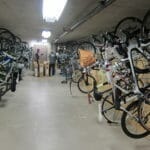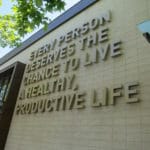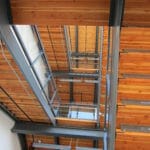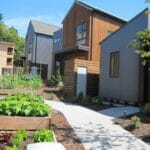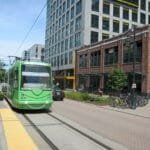Top Story
Last week, I had the opportunity to participate in a Building Healthy Places study tour in Seattle, Washington. With funding assistance from a 2014 Urban Innovation Grant, ULI San Francisco and ULI Northwest collaborated on two exchange visits. For the visit to Seattle, ULI Northwest played host to members from San Francisco, organizing a three day tour of projects and places, and visits with people, each contributing something unique to the conversation about what it will take to build healthier communities.
The three day exchange was full of rich content, with insights from some of Seattle’s most important leaders in the space. A short post won’t be able to do the trip justice, but highlights from the tour included:
- A reception and tour of Via6 with developer Matt Griffin and his partner Matt Rosauer. Via6, an apartment complex which is featured in Building for Wellness: The Business Case, promotes biking with an onsite bike shop and locker and shower facilities accessible to non-Via 6 dwellers for $15/month. The project is home to numerous families and children, who utilize the building’s common spaces, and hosts a coffee shop and restaurant in its ground level.
- The Microsoft Envisioning Center, which is engaged in a series of thought experiments or “scenarios” exploring how technology might link and engage us in the future. Microsoft’s Redmond campus is served by the company’s Connector shuttle buses and cars, which bring 25,000 workers to and from the complex each day.
- A visit to the new Bill and Melinda Gates Foundation headquarters. “Every person deserves the chance to lead healthy, productive lives,” the Foundation believes, and the new building complex is a physical manifestation of that mission. Goals for the building included serenity, flexibility, transparency, and sustainability. The complex’s thoughtful design helps inspire the “innovation, optimism, and rigor” that is needed to solve the world’s pressing health challenges.
- The Bullitt Foundation building, intended as a Living Building Challenge demonstration site, has many remarkable features—including foaming toilets. But perhaps the most striking design element is the building’s gracious wooden stairs, cased in windows and placed in a prominent position in the front of the building. The results have been good: initial estimates show that 75% of visits to the uppermost 6th floor are made by the stairs, a fraction that is much higher than typical.
- A challenge to the group by Howie Frumkin, Dean of the University of Washington School of Public Health, who said we need to do something differently. “We have a situation,” he said. “Healthy places can help.” A key opportunity he identified was for the development community to be more involved in efforts to systematically measure health outcomes.
- A ferry ride to tranquil Bainbridge Island, followed by a walking tour of Grow Community, a master planned development also featured in Building for Wellness with an unusual design that clusters houses together, away from a common shared parking area. Vegetable gardens line the walking paths that provide access to homes. An uncommonly thoughtful development approach fosters health, happiness and community.
“Green is boring now. This gives people
the opportunity to do something in their
everyday lives and not give anything
up. In fact, they gain something.”
Marja Preston. President, Asani Development.
- A visit to Pike Place Market, and a review of the vibrant city market’s history by the market’s manager, as well as a peek at the city’s bold and intricately considered post-Alaskan Way Viaduct waterfront redevelopment plans. The plans accommodate a water level rise of 76 inches, a possibility in the face of climate change and storm surges, incorporate public art, and make room for a wide range of users.
- And last but not least, a walking tour of the rejuvenated South Lake Union area by Ada Healey, President of Vulcan Real Estate. In the past ten years, the neighborhood has gone from derelict to bustling, with new buildings to accommodate the shockingly fast expansion of Amazon offices, major road realignments, and the creation of a new waterfront park.
At each stop workshop attendees—who were public and private ULI members from San Francisco and Seattle—examined the health aspects of the visited projects.
Look out for a more comprehensive summary of the study tour to be released later this year. Many thanks to ULI Northwest and ULI San Francisco for putting together such a terrific program.
Read about the May 7-9 tour of San Francisco here.
See the full Seattle agenda here.
